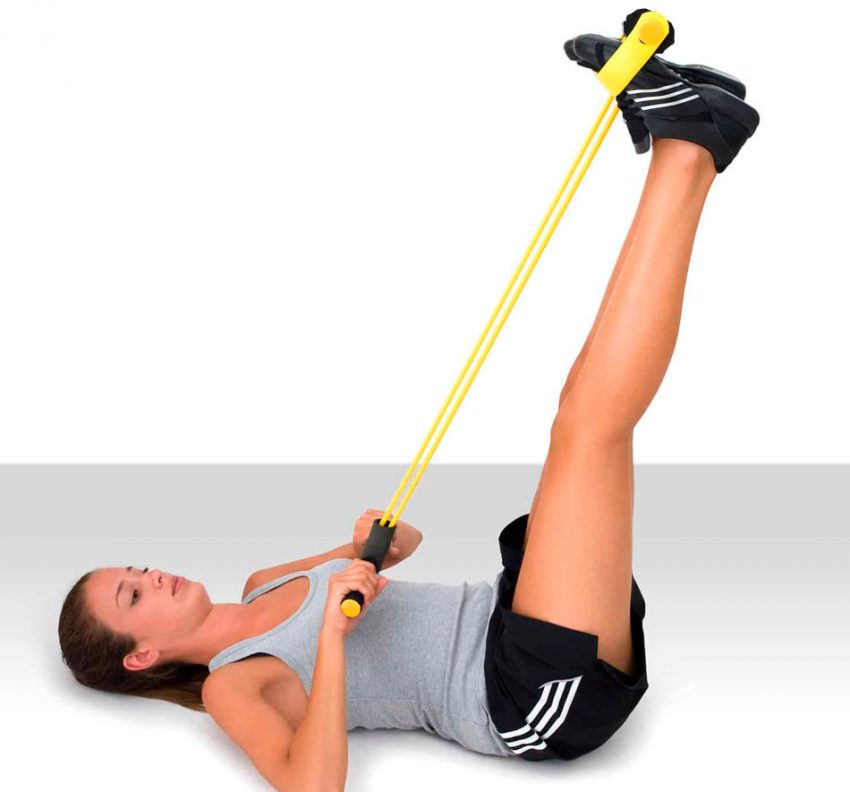The pendulum for the press is a gymnastic exercise that allows you to work out the oblique muscles of the press, and involves the hips, back, and in part even the buttocks. The movement is performed with the weight of your own body, and is a variation of the reverse twisting. The Pendulum is perfect for both fitness beginners and experienced athletes. You can do it at home.
Who is the exercise for?

It is believed that women should limit the performance of such movements, as they contribute to the expansion of the waist. In fact, the “pendulum” for the press is not an exercise that will increase the waist. Weights that are sufficient for hypertrophy are not used here, so women may well include movement in their training 1-2 times a week. Working out the obliques will give them a healthier spine and posture, and have a positive effect on the condition of the lower back. Core pumping is a good prevention of back pain from sedentary work.
To a greater extent, the “pendulum” is used not in gymnastics, where athletes quickly switch to a more complicated version, but in bodybuilding and powerlifting. In these sports, having a well-trained abs means injury prevention and aesthetics. Bodybuilders sometimes perform ankle pendulum weights to achieve greater muscle hypertrophy. But even here it is necessary to dose the load, because the large waist does not correspond to the canons of the aesthetics of this sport.
Execution technique

The movement is smooth and controlled. You can insert the pendulum on the press at the beginning of the workout or at the end. Usually, at the beginning, the pendulum is done by those who do not perform a large amount of basic exercises, including cores. At the end, it is advisable to perform the movement if there was a lot of base in the workout.
The classic pendulum technique is as follows:
- Lying on the floor, you need to pull the press inward;
- Raise your legs perpendicular to the floor;
- Stretch your arms to the sides so that you can strain your back and stabilize the spine;
- Lower your legs to the floor to the left, as you exhale, bring them back to the center;
- Repeat movement to the right;
- Perform the required number of repetitions.
Beginners can bend their knees to make the exercise easier.
Fitball option

Fitball is used by those who need to additionally include the inner thighs and slightly increase the degree of burden. A medicine ball or small medicine ball – only transfer the load to the obliques.
Technics:
- Clamp the ball between your legs so that it does not roll. The depth of taking the projectile depends on the length of the legs and the stretch, and is not a universal value;
- Press your back to the floor so that the position is stable;
- Perform a regular pendulum for the required number of repetitions.
Option with elastic band

The rubber band can help increase the resistance and make the starting position more correct. Pulling the rubber bumper tightly will push your pelvis to the floor, which will help you do the exercise correctly.
Technics:
- Put rubber on your feet;
- Perform a pendulum movement from right to left or left to right;
- If the range of motion is not enough, do not bring your legs to the floor;
- The limiter is the moment when the pelvis begins to come off.
Variation with a fretboard

This version of the “pendulum” is made by those who need oblique for power sports:
- Stand straight, secure the bar in the corner, take the free part in your hands in front of your chest;
- Perform movements from right to left and left to right;
- This variation of the pendulum is more reminiscent of ordinary rowing.
If you are in the gym, the movement can be replaced by rotation on the block, which is safer for the back. The crossover block is set at waist level, the handle is fixed in the hands, and a rotational movement is performed around the axis of the spine, pulling to the side. Then the side changes and you need to do the same reps as was done in the first approach.
Hip pendulum variation

This is not exactly the swingarm that engages the press, but standing up with a rubber shock absorber:
- you need to stand up straight, step on the shock absorber in the center and evenly distribute the body weight;
- then a pendulum movement is performed, lifting the leg to the side;
- the load can be slightly shifted by working sideways and back, and pumping the buttocks.
You can also do this exercise with a rubber shock absorber that is worn on your knees.
The exercise is done in 3-4 sets of 10-20 reps depending on the goals of the athlete. It is up to the athlete to perform it in a regular or complicated format, depending on his physical form. This movement should not be done if you are experiencing stretching of the back muscles, pain in the shoulder and trapezium area, as well as after and during chronic diseases of the pelvic organs.
Exercise can be included in the workout 1-2 times a week, but it is better not to do it every day.



